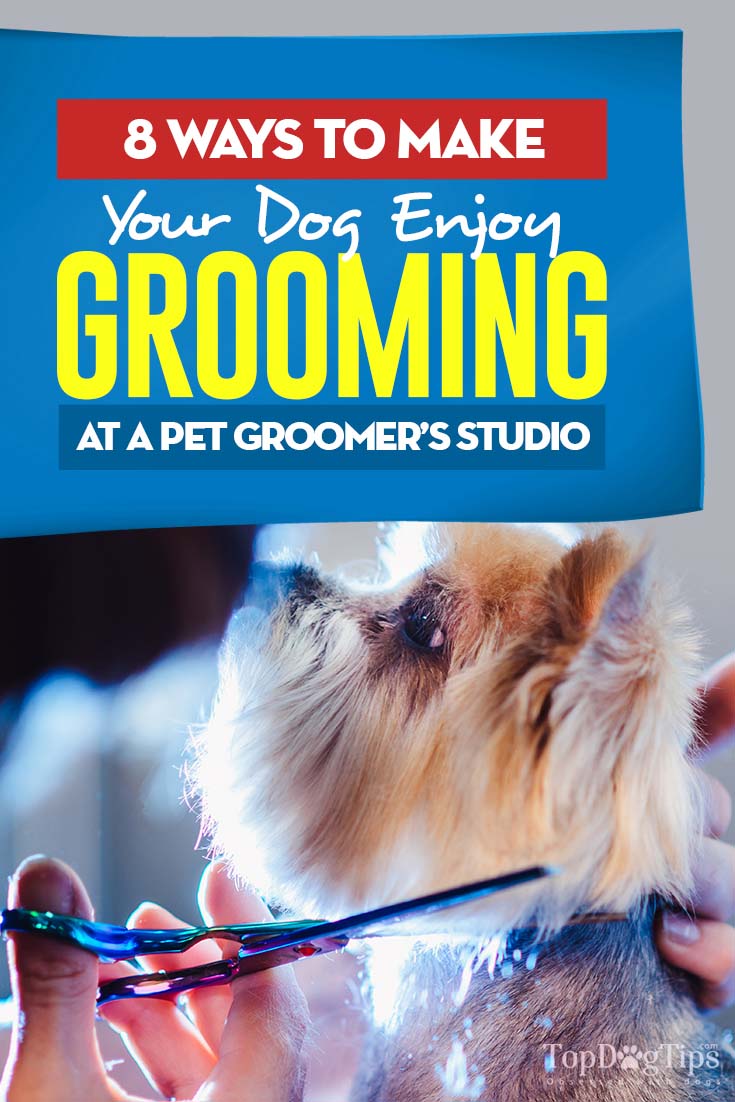If you're an owner of long haired, high maintenance or double coated breed, then you know how much of a nightmare it can be to get your dog into the groomer's office. The mere sound of a clippers or vacuum gives your pup the shakes, not to mention the fact that you won’t be there to make the situation a little better. But there are several ways for you to make your dog's grooming encounter at the studio much more pleasant and even have your dog enjoy grooming altogether.
ALSO READ: How to Train a Dog to Enjoy Grooming & Stay Calm at Home
1. Get the Dog Used to Nail (and Hair) Clipping at Home
If you’ve ever been too scared to do something, you realize that it’s really not that bad once you’ve done it; the fear is all in your head. Dogs aren’t able to process that the way we do, so if they’re fearful of a situation, or have had a particularly bad experience with it in the past, they’re likely to avoid it in the future.
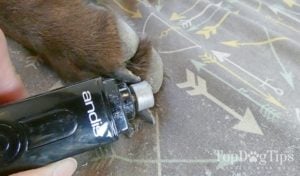 Your dog's fear of nail trimming stems from the fact that dogs do not like their paws to be touched. Help your dog understand that no harm is done by the touch of their paws, and get them used to the feeling of their paws being held by a person.
Your dog's fear of nail trimming stems from the fact that dogs do not like their paws to be touched. Help your dog understand that no harm is done by the touch of their paws, and get them used to the feeling of their paws being held by a person.
Start with a quality pair of dog nail clippers and do a practice run at home. When your pet does well and cooperates, give them praise and let them know; pet your dog. Once the dog realizes it’s not so bad, they won’t mind as much if a stranger does it.
With some dogs (or owners), a Dremel filing tool may work better; however, others are more afraid of Dremel because of the sound it makes. It'll come to trial and error. Finally, do not rush the process and stay calm, confident yourself. Allow your dog to sniff the clipper first and let him listen for a little to what it sounds like.
2. Give Your Dog a Treat When They Do Well
Not surprisingly, the key to getting your dog enjoy grooming is dog treats. So once your pooch has adjusted to a trial grooming session at home, give them treats for a job well done. This encourages your dog to not only accept the grooming process, but also to enjoy it and look forward to it.
Some dogs will need more treats than others, but it's important to instill that into the whole routine without letting your dog get fat (so use low-calorie treats). And if this means you have to give your dog treats to get them through the process at the groomer's too, then do so and encourage the groomer, too. After a while your pet won’t need them anymore and will gladly go along with it.
3. Get to Know Your Groomer Personally
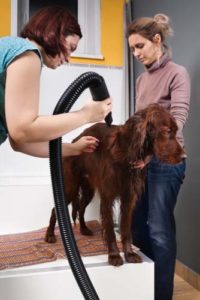 Knowing the person who grooms your pooch by name is pertinent to their comfort and their safety. It has been reported that at least 47 dogs have sadly died or been injured at places like Petsmart grooming studios. Usually this is because the employees are improperly trained or haven’t been thoroughly screened.
Knowing the person who grooms your pooch by name is pertinent to their comfort and their safety. It has been reported that at least 47 dogs have sadly died or been injured at places like Petsmart grooming studios. Usually this is because the employees are improperly trained or haven’t been thoroughly screened.
Listen to your dog, pay attention to your pup's body language and the signals they send you. If your dog seems much too stressed and terrified to go to the pet groomer or comes back shaken up, it might not just be that the dryer was too loud. There could be something more serious going on, and it's possible that the groomer didn't care enough to make the dog feel comfortable during the process.
4. Help Them Understand You’re Coming Back
This one is a little tricky – it’s not as though you can verbally tell your pet they won’t be left there forever. However, timing is very important to your dog. Once they’re done being poked and prodded with clippers and scissors at a studio, the groomer will likely place your dog in a small cage or kennel (unless you're there waiting already).
That cage is generally where your dog will stay until you come to get them. Sometimes we get busy, and with a crazy schedule it’s easy to forget you dropped your dog off early in the morning. Try to make a habit of picking them up within an hour or two of being groomed, but ideally be there to get the dog right after the session so he doesn't have to spend time in a crate.
5. Start the Day Early
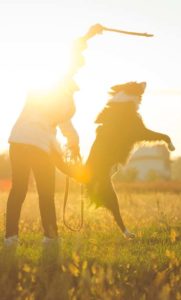 You may not be an early bird, but you should try to wake up at least an hour or two earlier than your regular time on the day when you plan to take your pup to a pet groomer's.
You may not be an early bird, but you should try to wake up at least an hour or two earlier than your regular time on the day when you plan to take your pup to a pet groomer's.
It might feel a little inconvenient, but this is helpful in tiring your dog out before they have their appointment. The dog will have used the bathroom, eaten their food, and will have already settled down by the time your appointment rolls around.
6. Exercise Your Dog Beforehand
Speaking of early wake-up, what you do then is play and train your dog during that extra hour. Exercise is one of the best remedies for most behavioral issues in dogs. Canines just have a natural drive inside of them that needs an outlet; if you don’t provide one, you’ll soon see the outcome at your next scheduled grooming session.
Kill two birds with one stone by going for a walk, run, or play some ball in the morning since you’re up earlier than usual anyway. They still might not love the idea of going to the groomer, but you should definitely see less resistance because your dog is tired.
7. Brush Your Dog Regularly
Very rarely do groomers in high end pet salons take the time to work through kinks and knots. They have upwards of 50 dogs to groom per day, so they’re going to move as quickly as they can. Sometimes this means a dog gets nicked by a razor or fur is pulled out because of a mat that needed to be brushed out.
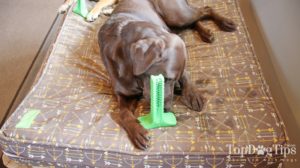 Don’t make the groomer's job harder than it has to be, and it benefits your dog to keep the groomer happy as well. This doesn’t necessarily mean you’ve got to do all the difficult work for them, but a daily combing should be a part of your schedule.
Don’t make the groomer's job harder than it has to be, and it benefits your dog to keep the groomer happy as well. This doesn’t necessarily mean you’ve got to do all the difficult work for them, but a daily combing should be a part of your schedule.
Just like food and water, your pet depends on you to help them with daily hygiene. Maybe even do a quick brushing session and use a dematting tool just before going to the groomer's (just like you would brush your teeth before going to a dentist).
8. Try Medication as a Last Resort
If you’ve done all you can to make your dog enjoy grooming, and it doesn’t seem like the situation is getting any better, an alternative would be to try some medication and anxiety aids. Discuss this with your veterinarian and try something light at first. For example, Benadryl is both safe for dogs and only makes them a bit drowsy. The proper dose of Benadryl for dogs is 1 mg per pound of body weight. If your dog has never had Benadryl, give them a smaller amount at first to make sure there aren’t any serious side effects.
For very serious dog anxiety cases, you can also get medications such as Prozac and other relaxants from your veterinarian. However, this should be the absolute last ditch effort in calming your dog down since medications don’t always provide the results that we expect. In the same way that humans tend to become dependent on drugs, dogs are also at risk for developing a physical need for them for whenever they're anxious.
On the other hand, when an animal is so worked up and stressed out that they’re actually causing themselves harm, prescription medications can actually be extremely helpful and usually recommended by veterinarians. Just get the best professional advice possible before you make a solid decision. You can even try it alongside a calming dog collar which has been proven to help anxious dogs.
READ NEXT: How to Groom a Dog – All-in-One Guide for Beginners


